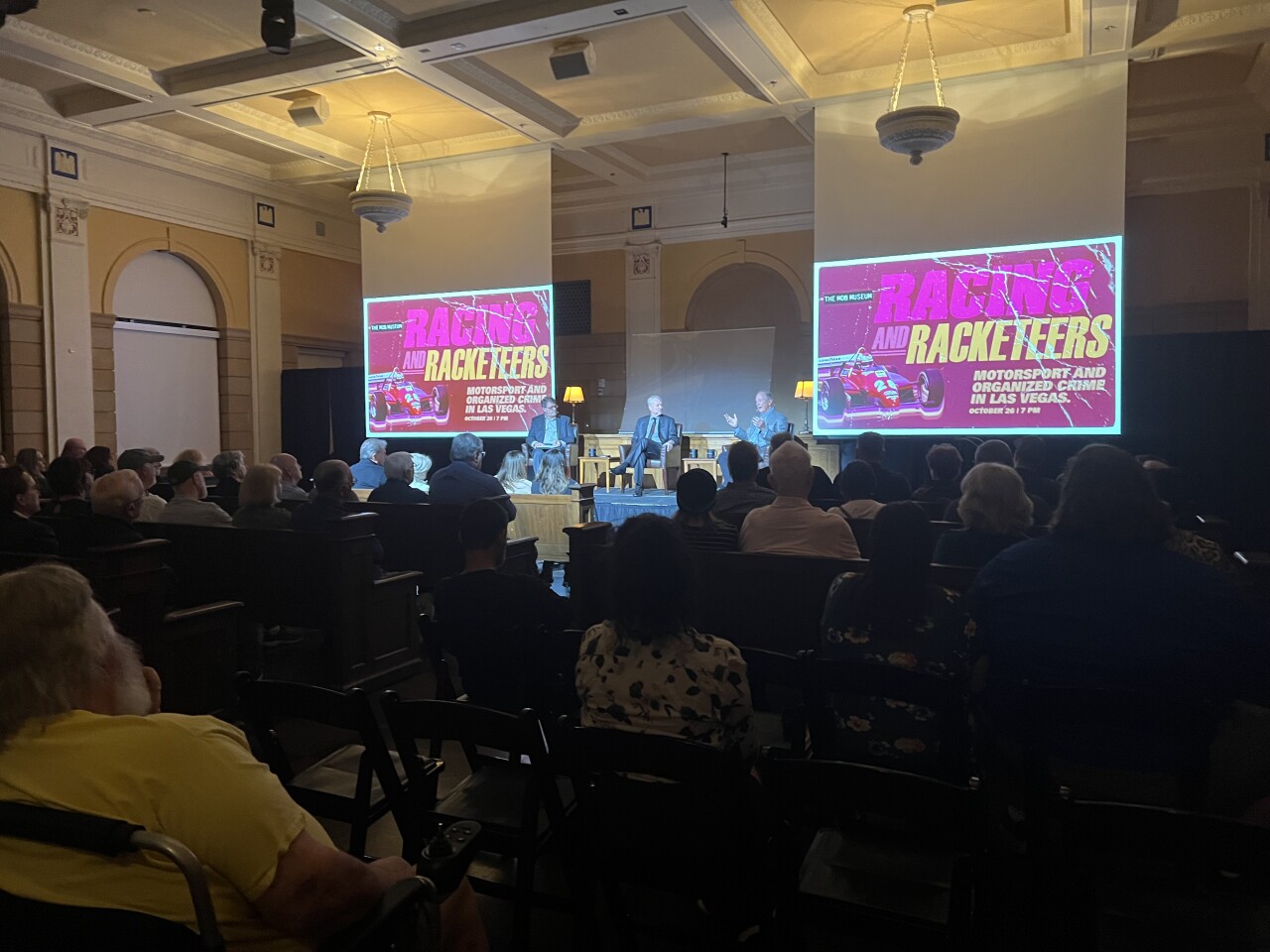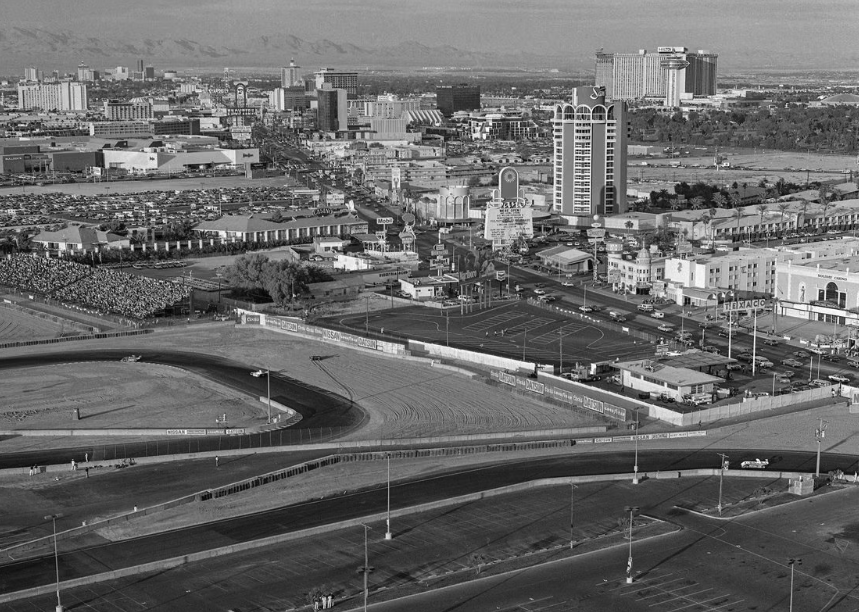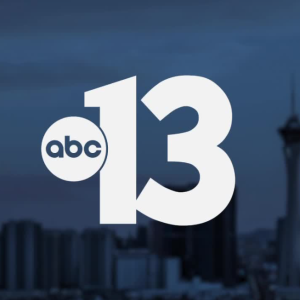LAS VEGAS (KTNV) — We are three weeks away from Formula 1 returning to the valley with the Las Vegas Grand Prix. However, it won't be the first time that Formula 1 is in Las Vegas.
In 1981 and 1982, Las Vegas held the Caesars Palace Grand Prix. On Thursday, Bill Weinberger, the former president of the Caesars Palace Grand Prix, spoke during an event at the Mob Museum, along with historian Randy Cannon. Weinberger talked about how he became involved in the event and what it took to put on.
According to Weinberger, he was working for Cliff Pearlman at the time. Pearlman owned Caesars Palace. Weinberger said he didn't even watch Formula 1 when he was approached to plan the event.
"I walked into the office one Monday morning and Bill McKinley [then-president of Caesars World] came in two minutes behind me. He asked did you see the race in Monaco on TV yesterday? I said no. He asked if I knew anything about racing. I said no," Weinberger said. "He said well, I think it'd be a great idea if we had a race like that in Las Vegas. I said probably. He said I talked to Cliff and he thinks it'd be a terrific idea. You're on it."

Weinberger said it took five years of planning and was a terrible experience.
"I had no idea the maze of problems that exists in the world of auto racing. Political problems, ego problems, people grabbing power here and grabbing power there. Jealousies here. Jealousies there," Weinberger said. "It was an absolute nightmare."
That planning included building a track.
"The track was designed by Tony Marnell and built by Corrao Construction Company who slaved through the summer of 1981 to get things ready. It was commonly denigrated as a parking lot Grand Prix," Weinberger said. "Yes. It raced through the parking lot. But it was a deep-cut, built-up, purpose-built section of Formula 1-worthy asphalt."
In a way, the track was inspired by Weinberger.
"Bernie Ecclestone was the czar of Formula 1 at the time. He and I were sitting in the coffee shop at Caesars Palace trying to put this deal together and he said how in the world are we going to fit a 2.5-mile track onto the space you got," Weinberger recalled. "I had my hand on the placemat and said how about this? I literally traced my hand around on the placemat. I said do you think we have enough space this way? He said it's an awful lot of turns, maybe only a few fingers."
RELATED LINK: 'Most of the work is done': A glimpse of the 3.8-mile F1 Las Vegas Grand Prix

RELATED LINK: Take a closer look at Formula 1 cars
One of the reasons they designed such a special track on Caesars Palace property is because they couldn't get permission to race on the Strip.
"The race was going to start where it did end up starting but then come down the Strip, make a right-hand turn, make another right-hand turn and go up the driveway of Caesars Palace where the fountains are, go back down to the Strip, turn onto what was then Dunes, up to the freeway entrance. We were going to build a ramp down from the freeway entrance onto our property to the come back down to the finish line. It would have been spectacular," Weinberger said. "The city said no and the county said no because we wouldn't be able to get emergency equipment in in case there's an emergency. The state said no because Las Vegas Boulevard is a state highway and you're going to have to tear up that road and we aren't going to let you do that and mess up traffic. The federal government said the freeway system is part of our national defense system and it would take an act of Congress to do that. So we wound up doing it all on our own land."
According to Weinberger, there were also many "hurdles" that hampered progress.
"Every time we jumped a hurdle, they put another hurdle in front of you. [It was] things like well, you can't run a Formula 1 race on that track unless you've already run an auto race on that track to prove it's a good track," Weinberger said. "I said we're not doing that. We're not building a race track in our parking lot and the land next door to it that we lease once a year to put on some third-rate race that nobody cares about. That's too big an investment to do that. I always had problems with NASCAR. I had problems with Long Beach due to Formula 1 racing in Long Beach. I had problems with Europeans who were afraid that Americans were going to take over the sport. It went on and on for five years."

RELATED LINK: Beginner's guide to Formula 1 flags
Weinberger said they thought the event would bring in big money, but it ended up not bringing in what they expected.
"We thought there was an untapped market in Europe, Asia, and the Middle East with Formula 1 fans. We said look at what's going on in Monaco. All these fancy people are walking up and down the street spending money like it's water. We figured they'd probably like to come gamble at Caesars Palace. They didn't," Weinberger said. "If a dozen great gamblers showed up, it would have been a huge success. That was the problem with the race, from our point of view. The good news was that the city and Caesars Palace got the most wonderful publicity worldwide for the race."
Cannon said the race also didn't succeed because "Las Vegas didn't really know what to do with it."
"The attendance at the Grand Prix for its two Formula 1 years was never more than about 35,000. The resort corridor did not embrace the concept," Cannon said. "As I recall, access to the track was through the Caesars Palace casino. It was tough for the resort corridor to get on board. Attendance itself wasn't going to move the meter and it just did not bring in the gamblers."
After 1981 and 1982, Formula 1 left town. Both Cannon and Weinberger were asked what they thought about Formula 1 returning to Southern Nevada. They said the global TV audience is there and that Las Vegas is good at "putting on spectacles". However, they said it remains to be seen if the Las Vegas Grand Prix will be a success.

"The television show that gets put on is going to be fantastic with the entertainment they're planning, with the nighttime lights, and cars going down the Strip at 200 miles an hour. That's what Liberty Media, [who owns Formula 1], is interested in because that's what they sell," Weinberger said. "They don't worry about anyone going to the crap tables. They could care less. They may have the same problem this time that we had in that gamblers really aren't interested."
"It'll be the most viewed Formula 1 event of this season but it's not going to determine a champion. Max Verstappen, he's so far ahead that with five events to go, he's already the points champion. Bill's event determined the global Formula 1 world champion both years the event was in Las Vegas," Cannon said. "But it's going to be a TV spectacle. It's probably have a global viewing audience in the hundreds of millions and it'll dwarf anything this town has seen before."
RELATED LINK: F1's Las Vegas Grand Prix leading Strip productions to change, cancel shows
According to Cannon, economists said the 1981 and 1982 Grand Prix events in Las Vegas brought in $125 million to the Las Vegas economy. He said this year's event is expected to bring in $1.3 billion so it "should be successful on every measure as long as we can get comfortable with it."
You can read all of our coverage on Formula 1 and the upcoming Las Vegas Grand Prix here.





